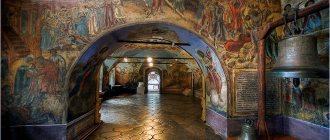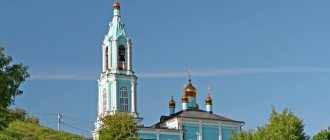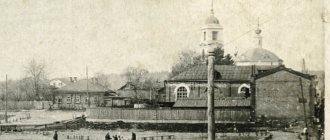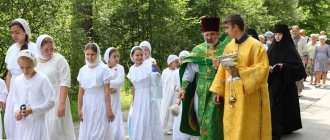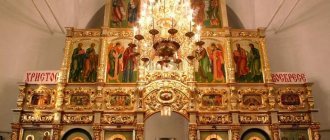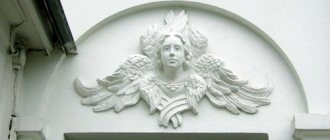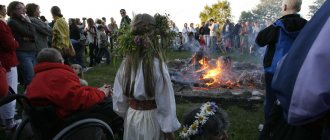Mir
Azerbaijan Map loading in progress...
{"format":"leaflet","minzoom":false,"maxzoom":false,"limit":50,"offset":0,"link":"all","sort":[""], "order":[],"headers":"show","mainlabel":"","intro":"","outro":"","searchlabel":"\u2026 \u0441\u043b\u0435\ u0434\u0443\u044e\u0449\u0438\u0435 \u0440\u0435\u0437\u0443\u043b\u044c\u0442\u0430\u0442\u044b","default":"","import-annotation":false,"width ":"auto","height":"400px","centre":{"text":"","title":"""link":"""lat":40.39362940000000179452399606816470623016357421875,"lon": 47.78725080000000247082425630651414394378662109375,"icon":""},"title":"","label":"","icon":"","lines":[],"polygons":[],"circles":[ ],"rectangles":[],"copycoords":false,"static":false,"zoom":4,"defzoom":14,"layers":["OpenStreetMap"],"image layers":[] ,"overlays":[],"resizable":false,"fullscreen":true,"scrollwheelzoom":true,"cluster":true,"clustermaxzoom":7,"clusterzoomonclick":true,"clustermaxradius":80, "clusterspiderfy":true,"geojson":"","clicktarget":"","showtitle":true,"hidenamespace":false,"template":"","userparam":"","activeicon": "","pagelabel":false,"ajaxcoordproperty":"","ajaxquery":"","locations":[{"text":"\u003Cb\u003E\u003Ca href=\"/palomnik/%D0% 9A%D0%B0%D1%84%D0%B5%D0%B4%D1%80%D0%B0%D0%BB%D1%8C%D0%BD%D1%8B%D0%B9_%D0%A1% D0%BE%D0%B1%D0%BE%D1%80_%D0%A1%D0%B2%D1%8F%D1%82%D1%8B%D1%85_%D0%96%D0%B5%D0% BD_%D0%9C%D0%B8%D1%80%D0%BE%D0%BD%D0%BE%D1%81%D0%B8%D1%86_(%D0%91%D0%B0%D0%BA %D1%83)\» title=\»\u041a\u0430\u0444\u0435\u0434\u0440\u0430\u043b\u044c\u043d\u044b\u0439 \u0421\u043e\u0431\u043e\u0440 \u0421\ u0432\ u044f\u0442\u044b\u0445 \u0416\u0435\u043d \u041c\u0438\u0440\u043e\u043d\u043e\u0441\u0438\u0446 (\u0411\u0430\u043a\u0443)\ »\u003E\u041a\u0430\ u0444\u0435\u0434\u0440\u0430\u043b\u044c\u043d\u044b\u0439 \u0421\u043e\u0431\u043e\u0440 \u0421\u0432\u044f\u0442\u044b\u0 445\u0416\u0435\u043d\u041c\ u0438\u0440\u043e\u043d\u043e\u0441\u0438\u0446 (\u0411\u0430\u043a\u0443)\u003C/a\u003E\u003C/b\u003E","title":"\u041a\u0430\u044 4 \u0435\u0434\u0440\u0430\u043b\u044c\u043d\u044b\u0439 \u0421\u043e\u0431\u043e\u0440 \u0421\u0432\u044f\u0442\u044b\u0445 \u0416\u0435\u043d \u041c\u0438 \u0440\u043e\u043d\u043e\u0441\u0438\u0446 (\u0411\u0430\u043a\u0443)","link":"""lat":40.39022358999999795514668221585452556610107 421875,"lon":49.81990214999999722067514085210859775543212890625,"icon":" /palomnik/images/c/ce/Green_marker.png"},{"text":"\u003Cb\u003E\u003Ca href=\"/palomnik/%D0%9C%D0%B8%D1%85%D0%B0 %D0%B9%D0%BB%D0%BE-%D0%90%D1%80%D1%85%D0%B0%D0%BD%D0%B3%D0%B5%D0%BB%D1%8C% D1%81%D0%BA%D0%B8%D0%B9_%D1%85%D1%80%D0%B0%D0%BC_(%D0%91%D0%B0%D0%BA%D1%83)\ » title=\»\u041c\u0438\u0445\u0430\u0439\u043b\u043e-\u0410\u0440\u0445\u0430\u043d\u0433\u0435\u043b\u044c\u0441\u043a\u0438\u0 439\u0445\u0440 \u0430\u043c (\u0411\u0430\u043a\u0443)\»\u003E\u041c\u0438\u0445\u0430\u0439\u043b\u043e-\u0410\u0440\u0445\u0430\u043d\u04 33\u0435\u043b\ u044c\u0441\u043a\u0438\u0439 \u0445\u0440\u0430\u043c (\u0411\u0430\u043a\u0443)\u003C/a\u003E\u003C/b\u003E","title":"\u041c\u04 38 \u0445\u0430\u0439\u043b\u043e-\u0410\u0440\u0445\u0430\u043d\u0433\u0435\u043b\u044c\u0441\u043a\u0438\u0439 \u0445\u0440\ u0430\u043c (\u0411\u0430 \u043a\u0443)","link":"","lat":40.373637999999999692590790800750255584716796875,"lon":49.8320199999999999818101059645414352416992187 5,"icon":"/palomnik/images/c/ce/Green_marker.png"},{"text" :"\u003Cb\u003E\u003Ca href=\"/palomnik/%D0%A1%D0%B2%D1%8F%D1%82%D0%BE-%D0%9D%D0%B8%D0%BA%D0 %BE%D0%BB%D1%8C%D1%81%D0%BA%D0%B8%D0%B9_%D1%85%D1%80%D0%B0%D0%BC_(%D0%A5%D0% B0%D1%87%D0%BC%D0%B0%D0%B7)\» title=\»\u0421\u0432\u044f\u0442\u043e-\u041d\u0438\u043a\u043e\u043b\u044c\u0441\ u043a\u0438\u0439 \u0445\u0440\u0430\u043c (\u0425\u0430\u0447\u043c\u0430\u0437)\»\u003E\u0421\u0432\u044f\u0442\u043e-\u041 d\u0438\u043a\u043e \u043b\u044c\u0441\u043a\u0438\u0439 \u0445\u0440\u0430\u043c (\u0425\u0430\u0447\u043c\u0430\u0437)\u003C/a\u003E\u003C/b\u 003E","title ":"\u0421\u0432\u044f\u0442\u043e-\u041d\u0438\u043a\u043e\u043b\u044c\u0441\u043a\u0438\u0439 \u0445\u0440\u0430\u043c (\u0 425\u0430\u0447\ u043c\u0430\u0437)","link":"","lat":41.45911679999999677193045499734580516815185546875,"lon":48.8020625999999992927769199013710021972 65625,"icon":"/palomnik/images/c/ce/Green_marker.png"},{"text ":"\u003Cb\u003E\u003Ca href=\"/palomnik/%D0%A1%D0%BE%D0%B1%D0%BE%D1%80_%D0%A0%D0%BE%D0%B6%D0 %B4%D0%B5%D1%81%D1%82%D0%B2%D0%B0_%D0%9F%D1%80%D0%B5%D1%81%D0%B2%D1%8F%D1%82 %D0%BE%D0%B9_%D0%91%D0%BE%D0%B3%D0%BE%D1%80%D0%BE%D0%B4%D0%B8%D1%86%D1%8B_(% D0%91%D0%B0%D0%BA%D1%83)\» title=\»\u0421\u043e\u0431\u043e\u0440 \u0420\u043e\u0436\u0434\u0435\u0441\u0442\u0432\u0430 \u041f\u0440\u0435\u0441\u0432\u044f\u0442\u043e\u0439 \u0411\u043e\u0433\u043e\u0440\u043e\u0434\u0438\u0446\u044b (\u0411\ u0430\u043a\u0443)\" \u003E\u0421\u043e\u0431\u043e\u0440 \u0420\u043e\u0436\u0434\u0435\u0441\u0442\u0432\u0430 \u041f\u0440\u0435\u0441\u0432\ u044f\u0442\u043e\u0439\u0411 \u043e\u0433\u043e\u0440\u043e\u0434\u0438\u0446\u044b (\u0411\u0430\u043a\u0443)\u003C/a\u003E\u003C/b\u003E","title":"\u0421\ u043e\u0431\u043e\u0440 \u0420\u043e\u0436\u0434\u0435\u0441\u0442\u0432\u0430 \u041f\u0440\u0435\u0441\u0432\u044f\u0442\u0 43e\u0439\u0411\u043e\u0433\ u043e\u0440\u043e\u0434\u0438\u0446\u044b (\u0411\u0430\u043a\u0443)","link":"","lat":40.3791920000000033041942515410482883453369140 625,"lon":49.83758900000000124919097288511693477630615234375,"icon":"/ palomnik/images/c/ce/Green_marker.png"},{"text":"\u003Cb\u003E\u003Ca href=\"/palomnik/%D0%A5%D1%80%D0%B0%D0%BC_% D0%BF%D1%80%D0%B5%D0%BF%D0%BE%D0%B4%D0%BE%D0%B1%D0%BD%D0%BE%D0%B3%D0%BE_%D0% A1%D0%B5%D1%80%D0%B0%D1%84%D0%B8%D0%BC%D0%B0_%D0%A1%D0%B0%D1%80%D0%BE%D0%B2% D1%81%D0%BA%D0%BE%D0%B3%D0%BE_(%D0%A1%D1%83%D0%BC%D0%B3%D0%B0%D0%B8%D1%82)\ » title=\»\u0425\u0440\u0430\u043c \u043f\u0440\u0435\u043f\u043e\u0434\u043e\u0431\u043d\u043e\u0433\u043e \u0421\u0435\u0440\u 0430\u0444\u0438\ u043c\u0430 \u0421\u0430\u0440\u043e\u0432\u0441\u043a\u043e\u0433\u043e (\u0421\u0443\u043c\u0433\u0430\u0438\u0442)\"\u003E \u0425\u0440\u0430\ u043c\u043f\u0440\u0435\u043f\u043e\u0434\u043e\u0431\u043d\u043e\u0433\u043e\u0421\u0435\u0440\u0430\u0444\u0438\u043c\u0 430\u0421\u0430\u0440\u043e\ u0432\u0441\u043a\u043e\u0433\u043e (\u0421\u0443\u043c\u0433\u0430\u0438\u0442)\u003C/a\u003E\u003C/b\u003E","title":"\u0425\u044 0 \u0430\u043c \u043f\u0440\u0435\u043f\u043e\u0434\u043e\u0431\u043d\u043e\u0433\u043e \u0421\u0435\u0440\u0430\u0444\u0438\ u043c\u0430\u0421\u0430\u0440 \u043e\u0432\u0441\u043a\u043e\u0433\u043e (\u0421\u0443\u043c\u0433\u0430\u0438\u0442)","link":"""lat":40.60854434000000168225597 008131444454193115234375,"lon":49.6358013199999987818955560214817523956298828125 ,"icon":"/palomnik/images/c/ce/Green_marker.png"},{"text":"\u003Cb\u003E\u003Ca href=\"/palomnik/%D0%A5%D1%80%D0 %B0%D0%BC_%D1%81%D0%B2%D1%8F%D1%82%D0%BE%D0%B3%D0%BE_%D0%90%D0%BB%D0%B5%D0%BA %D1%81%D0%B0%D0%BD%D0%B4%D1%80%D0%B0_%D0%9D%D0%B5%D0%B2%D1%81%D0%BA%D0%BE%D0 %B3%D0%BE_(%D0%93%D1%8F%D0%BD%D0%B4%D0%B6%D0%B0)\» title=\»\u0425\u0440\u0430\u043c \u0441\u0432 \u044f\u0442\u043e\u0433\u043e \u0410\u043b\u0435\u043a\u0441\u0430\u043d\u0434\u0440\u0430 \u041d\u0435\u0432\u0441\u043a\ u043e\u0433\u043e (\u0413\ u044f\u043d\u0434\u0436\u0430)\»\u003E\u0425\u0440\u0430\u043c \u0441\u0432\u044f\u0442\u043e\u0433\u043e \u0410\u043b\u0435 \u043a\u0441\u0430\u043d \u0434\u0440\u0430 \u041d\u0435\u0432\u0441\u043a\u043e\u0433\u043e (\u0413\u044f\u043d\u0434\u0436\u0430)\u003C/a\u003E\u00 3C/b\u003E", "title":"\u0425\u0440\u0430\u043c \u0441\u0432\u044f\u0442\u043e\u0433\u043e \u0410\u043b\u0435\u043a\u0441\u0430\u043d\u0434\u 0440\u0430\u041d\ u0435\u0432\u0441\u043a\u043e\u0433\u043e (\u0413\u044f\u043d\u0434\u0436\u0430)»»link»:»»»lat»:40.6793710000000032778189051896333 6944580078125,"lon":46.3563639999999992369339452125132083892822265625,"icon ":"/palomnik/images/c/ce/Green_marker.png"}],"imageLayers":[]}
Cathedral of the Holy Myrrh-Bearing Women in Baku
Azerbaijan
(Azerbaijani Azərbaycan), official name -
Azerbaijan Republic
(Azerbaijani Azərbaycan Respublikası) - a state located in the eastern part of Transcaucasia, Western Asia and the Middle East, and also, according to some sources, partially in Eastern Europe (0- 10 %). The population, according to estimates as of August 2020, is more than 10 million people, the territory is 86,600 km², by both of these indicators it is the largest country in the Caucasus.
History[edit]
At the time of its Christianization, Caucasian Albania occupied the territory of modern Azerbaijan north of the Kura River to the Derbent Gate. According to legend, the first preachers there were the holy Apostle Bartholomew (who also suffered martyrdom here) and the disciple of the Apostle Thaddeus - Elisha, who is believed to have been ordained by the first Patriarch of Jerusalem, the Apostle James, and whom local tradition calls the Apostle of Albania. The Apostle Elisha is credited with building the church at Gish.
However, officially, as the state religion, Caucasian Albania adopted Christianity from Armenia in the 4th century, when Saint Gregory the Illuminator baptized the Albanian king Urnayr and ordained his grandson Grigoris as the primate of the Albanian Church.
In 313, through the efforts of Saint Gregory the Illuminator, Christianity became the state religion of Caucasian Albania. The Church of Caucasian Albania is formed, consisting in canonical unity with the Armenian Apostolic Church. Together with the Armenian Church, the Church of Caucasian Albania rejects the Council of Chalcedon, and thus finds itself in the community of Oriental (Ancient Eastern) churches that are not in Eucharistic unity with the Orthodox Churches of the Byzantine tradition. According to another version, by the middle of the 4th century the Albanian Church received autocephaly and, with the exception of a short period of falling away to Monophysitism in the middle of the 6th century, subsequently adhered to Byzantine Orthodoxy.
The adherence of the Albanian Church to the Chalcedonian dogmas apparently remained until the Council of Partava (706), when the Armenian Catholicos Elijah I Archishetsi, with the support of the Arab authorities, achieved the deposition of the last Albanian Chalcedonian Catholicos Nerses Bakur (688-706), after which the displacement of the Albanian clergy by the Armenian began. In the 2nd half of the 10th century, the population of left-bank Albania (Hereti) reunited with Orthodoxy in the bosom of the Georgian Church.
In the 8th century, Albanians were conquered by the Arab Caliphate and, for the most part, became Islamized, and those who retained Christianity, with a few exceptions, gradually assimilated with the Armenians. Already by the beginning of the 2nd millennium, the Albanian Church was perceived as an autonomous Catholicosate of the Armenian Church. When the territories of Transcaucasia became part of the Russian Empire, the Albanian Catholicosate of the AAC in 1813, by decree of Tsar Nicholas I, became the metropolis of the AAC.
The main temple in Baku is the Cathedral of the Holy Myrrh-Bearing Women
Cathedral of the Holy Myrrh-Bearing Women
The main church in Baku is the Cathedral of the Holy Myrrh-Bearing Women. Erected in 1909 and consecrated in the name of the women who came to the tomb of the risen Christ to anoint his body with incense.
In January 1990, during the suppression of political opposition in Baku, the bell tower of the temple was partially destroyed by shells that hit it. In 1991, when the temple building fell into disrepair, the cathedral was transferred to the Russian Orthodox Church. Restoration and repairs took several years.
The Cathedral of the Baku Diocese contains particles of the relics of St. Bartholomew the Apostle and the “Tikhvin” and “Caspian” icons of the Mother of God.
In 2001, His Holiness Patriarch of Moscow and All Rus' Alexy II performed the great consecration of the Church of the Holy Myrrh-Bearing Women and awarded it the status of the cathedral of the diocese, and on March 24, 2003 the opening of the temple took place.
Ark with the relics of the Apostle Bartholomew
Land of the Apostle Bartholomew. Azerbaijan:
By leaving a comment, you accept the user agreement
New time[edit]
Orthodoxy came to Azerbaijan with Russian settlers at the beginning of the 19th century. In 1815, the first Russian Orthodox church appeared in Baku in honor of St. Nicholas the Wonderworker, later churches were built in other cities and villages - Ganja, Shamakhi, Lenkoran, Shusha, Gazakh, etc. By the 20s of the 20th century, there were about 30 Orthodox churches, chapels and prayer houses in Baku alone. The decoration of the city was the Alexander Nevsky Cathedral, built in 1898, in the foundation of which Emperor Alexander III took part in 1888 (demolished in 1936).
In 1905, the Baku diocese of the Russian Orthodox Church was formed.
During Soviet times, all Orthodox churches were closed and mostly destroyed, and many clergy were repressed. The diocese was abolished; the last Baku bishop was Bishop Mitrofan (Polikarpov), who died in Baku in 1934. Only three churches remained in Baku, two of which were again transferred to the Church and were opened in 1944 and 1946.
The Baku and Caspian diocese was created in 1919
In the 1st millennium, Christianity spread widely throughout the territory of Caucasian Albania and an independent Albanian Church was formed.
But after the establishment of Islam on the territory of modern Azerbaijan, the church fell into decay. Only in the 19th century did Christianity begin to develop again with the advent of the Russians.
Orthodox churches were built in Ganja, Shemakha, Baku and the cities of Dagestan. In the first decade of the 20th century, 17 churches were built in Baku alone, and more than 70 throughout Azerbaijan.
Church of the Nativity of the Blessed Virgin Mary
In connection with the growth in the number of Orthodox Christians, the Baku Episcopal Diocese was established in 1905. In 1919, a separate diocese was created from the Baku Vicariate with its center in Baku.
The diocese included parishes along the western coast of the Caspian Sea and the diocese received the name “Baku and Caspian”. The first to be erected was the Cathedral of St. Nicholas the Wonderworker, colloquially called Nikolaevsky.
Current state[edit]
In 1998, the Baku-Caspian diocese of the Russian Orthodox Church was restored. On March 22, 2011, by decision of the Holy Synod of the Russian Orthodox Church, the Baku-Caspian diocese was renamed the Baku-Azerbaijan diocese. As of 2021, there are 7 Christian Orthodox churches in the country. Of these, 6 belong to the Russian Orthodox Church: 3 are in Baku, 1 in Ganja, 1 in Khachmas and 1 in Sumgait. Another temple falls under the jurisdiction of the Georgian Orthodox Church - the Church of St. George in the village of Gakh-Ingiloy, Kakh region, where Ingiloy Georgians live compactly (about 7,500 people).
Albano-Udin Christian community[edit]
In Azerbaijan, in the village of Nij (Gabala region) and in the Oguz region, live the Udins, descendants of the Caucasian Albanians. Many Udins were baptized in the churches of the Baku diocese of the Russian Orthodox Church.
Albanian temple in the village of Nij
In 2001, during the visit of Patriarch Alexy II to Azerbaijan, representatives of the Udi community met with him, who expressed the desire of their people to join the Orthodox Church.
On May 28, 2003, the Albanian-Udin Christian community was created in Azerbaijan, with Robert Mobili as its chairman.
In 2003, repair and restoration work was completed in the oldest Albanian temple, which is located in the village of Kish (the temple on this site was founded by the disciple of the Apostle Thaddeus, Saint Elisha).
In 2006, the restoration of another Albanian temple was completed - the church in the village of Nij, Gabala region, where the Udins live compactly. Work is also underway to restore the 5th century Albanian basilica in the village of Gum, Gakh region, and the basilica in the village of Gyumruk.
In 2010, the Udi Christian community of Oguz was registered.
In 2021, with the support of the state, another Albanian temple was restored in the village of Nij, Gabala region.
During the revolution, all churches were closed or destroyed
After the October Revolution, when persecution of the church began, many priests of the Caspian diocese were repressed, and churches were either destroyed or given over to state institutions of the new government.
The Cathedral of the Myrrh-Bearing Women was one of the first to be closed in Baku in 1920. The temple housed a warehouse, then a gym.
Alexander Nevsky Cathedral
The Cathedral of the Nativity of the Blessed Virgin Mary was used as a barracks during the revolution, and the Alexander Nevsky Cathedral was completely destroyed. In 1936, the last Orthodox church in Azerbaijan was closed.
Notes
- News of the Baku-Azerbaijan Diocese.
- There are over 1.8 thousand mosques, 5 Orthodox churches and 6 synagogues in Azerbaijan (inaccessible link)
- ↑ 1234
Orthodoxy in Azerbaijan. ORTHODOXY.RU. - Albanian-Udin religious community established in Azerbaijan
- Chairman of the Albanian-Udi Christian religious community: “Hundreds of Albanian churches were either destroyed or appropriated by the Armenians” inaccessible
link). Retrieved March 18, 2014. Archived March 29, 2013. - Head of the Albanian-Udi Christian community: “Udin - Arkady Vladimirovich from Kirovobad - is a fiction of Armenian agitprop”
Temples of Azerbaijan
Azerbaijan is a country of contradictions and contrasts with a rich and specific culture that has been shaped by the ethnic groups inhabiting this land for thousands of years. The history of the peoples who lived here can be traced through religious buildings: temples of fire worshipers, churches, cathedrals, synagogues. Many of them were built here long before the Islamic period.
Fire Temple in Azerbaijan
The open-air temple-museum Ateshgah (“house of fire”) is located on the Absheron Peninsula, near the village of Surakhany, 30 km from Baku. Built approximately in the 17th-18th centuries. on the land of “eternal”, “unquenchable” lights - places where natural gas naturally comes to the surface. At different periods, the temple was a place of pilgrimage for fire worshipers, then Zoroastrians, Sikhs, and Hindus held their religious ceremonies here.
The religious building in the shape of a hexagon with a central quadrangular altar is a striking example of the Shirvan-Apsheron architectural school. The altar probably existed on this site back in the Median era, and was built in accordance with ancient traditions: in the form of a square with four pillars at the corners. In a later period, utility rooms and cells were erected, over which stone tablets with inscriptions in Persian, Hindu and Sikh languages were placed.
In the period from 1902 to 1975. the temple was not in operation, but after a large-scale reconstruction it was open to the public. Currently, fire worshipers of Iranian and Parsi origin periodically hold services here.
Albanian churches of Azerbaijan
The Albanians formed their own state - Caucasian Albania - around the 1st millennium BC. e. This people, originally professing Zoroastrianism and local religions, converted to Christianity in 315. Currently, 42 Albanian churches have survived in the country, most of which are in ruins.
Best preserved:
- “Chotari” – Udino-Albanian Church of St. Elisha (Nij village, Gabala district);
- Albanian temple, built in the I-IV centuries. (Kish village, Sheki region);
- Kala-Gergets Church (Oguz, Oguz district).
Synagogues in Azerbaijan
The first synagogue is Shabran, it was built in Azerbaijan in the 7th century. n. e. Today there are three Jewish communities in the country: Mountain Jews, European and Georgian. All of them, despite cases of anti-Semitism, take an active part in the life of the country. With the assistance of Jewish communities, cultural events are held, literature is published, and folklore groups operate. There are 10 synagogues operating on the territory of Azerbaijan: two in Baku, two in the city of Oguz, six in the village of Krasnaya Sloboda (Guba district).
The largest of them:
- Synagogue "Karchogi"
(Krasnaya Sloboda village). The six-domed building with an ornamental façade was built in 1888 according to the design of local mason Djilyad and restored in 2005 with funds donated by Jewish patrons. - Synagogue of Ashkenazi Jews
(Baku). It was originally erected in 1946 in the city center on the site of a former civil defense warehouse with funds from European and Georgian Jews. It practically collapsed by the beginning of the 2000s, so it was completely rebuilt in 2003.
Armenian churches in Azerbaijan
On the territory of Azerbaijan until the 90s. XX centuries there were several hundred monasteries, cathedrals and chapels belonging to the Armenian Apostolic Church. The Karabakh conflict (1988-1990) resulted in the destruction and demolition of almost all Armenian churches in Azerbaijan. The most beautiful architectural complexes, built more than 1.5 thousand years ago, were razed to the ground or dismantled for the construction of other buildings.
Some of the temples have been preserved in the disputed territory - in Nagorno-Karabakh. There is only one Armenian church left in Azerbaijan - St. Gregory the Illuminator, but it is not functioning either. Built in 1887, the temple was the main place of worship for the Armenian community of Baku. In 1990, the church was partially burned and the cross was removed from the dome. In 2004, the building was reconstructed and today it houses a library.
Orthodox churches of Azerbaijan
Orthodoxy in Azerbaijan is the second largest religious group after Islam, numbering about 200 thousand believers. The first Russian Orthodox church was erected in Baku in 1915, and two more churches were built in 1944. Today, there are 6 Orthodox churches on the territory of Azerbaijan: 5 of them belong to the Russian Orthodox Church, another one belongs to the Georgian Apostolic Church.
The most famous of them:
- Cathedral of the Holy Myrrh-Bearing Women
(Baku). Erected in 1908-1909. financed by the Russian Military Ministry, from 1920 to 2001. did not operate, was partially destroyed during Bloody January 1990, restored in the early 2000s. - Alexander Nevsky Church
(Ganja). The parish church was built with charitable funds on the site of an ancient cemetery. The building in the Byzantine style was erected in 1887 from plinth bricks, in 1931-1945. The temple did not function, resumed work in 1946. - St. Nicholas Church
(Khachmas). Built in 1946 through the efforts of Orthodox peasants, it has been in constant operation since that time. In 2006, it was restored and the surrounding area was landscaped. - Church of St. Nino
(Alibeyli village). Erected in 1871 with the assistance of Ingiloi Georgians, originally named in honor of John the Baptist, renamed in 1877. In the period 1917-1991. did not operate, was reconstructed in 2011, from that time services resumed in the temple.
